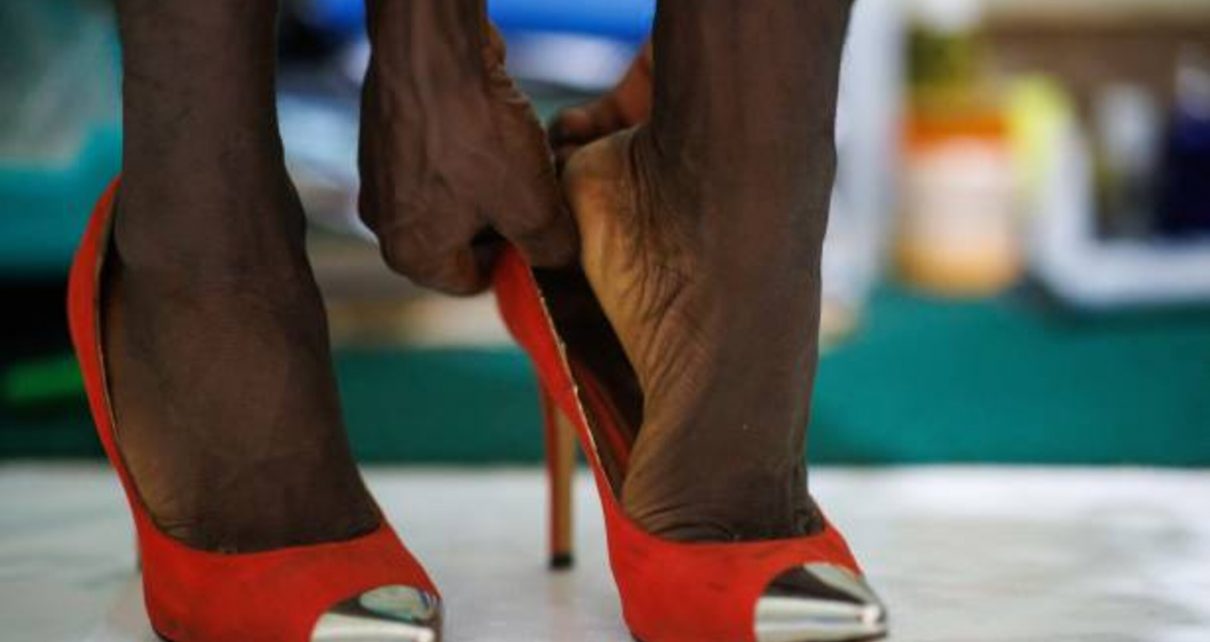By Anene Ejikeme
The world record for the longest-ever kiss is held by a Thai couple. Fifty hours! Talk about making pleasure unpleasurable! The rules for the competition were pretty rigorous, designed to ensure fair play. Couples could not take a break from kissing (obviously), they had to be touching each other at all times (not so obvious) and they had to stand inside a small square (huh?) A monitor had to accompany any couple that needed to go to the toilet to make sure they still complied with all the stipulations as they heeded the call of nature. Whoa!
Most readers will be either shocked or disgusted to learn that the winners, Nonthawat Charoegensornsin and Thanakorn Sittiamthong, are men. A gay couple? Yes, indeed.
If homosexuals are allowed to be so out in the open in Thailand, surely this must be a sign of the depths of Western decadence to which Thai leaders have allowed their country to sink. Well, actually, no. Thais are fiercely proud of the fact that they are one of only a handful of countries in Asia—and indeed anywhere in the world—not to have succumbed to Western colonial rule. The centuries-old Thai monarchy remains, overseen today by a flamboyant playboy. Thailand is over 90 per cent Buddhist. There is a Muslim minority in the south (less than 5 per cent of the total population) as well as a Christian minority that constitutes less than one per cent of the total population.
Deviant sexuality appears to be entirely home-grown in the case of Thailand.
Indeed, it is not just the Thai same-sex kissing couple that will shock and disappoint some. A Thai airline has also set off a first in the industry: PC Air hired six transsexual flight attendants in December of last year. In Thailand, transsexuals are known popularly as “ladyboys.” There is also an older and indigenous term: “kathoey.” Today, the terms ladyboy and kathoey are used to refer to homosexuals, men who dress as women, effeminate men, and men who have had sex-change surgery. The term kathoey is far from recent, having been used for centuries to describe people who were biologically or socially neither female nor male, but a mix or something in the middle: a “third sex”.
Although Thai society has long recognised that some people may belong to a “third sex,” this does not mean that kathoey enjoy full equality. Even though some very famous Thai performers are kathoey, most can expect teasing from family and friends and even discrimination, especially about employment.
In some ways, the life of Thai kathoeys is similar to that of the hijras of the Indian subcontinent. Hijras perform a necessary social function, but this doesn’t mean that people will not taunt them in the streets. Families invite them to perform at the birth of a child and weddings, but the host family is also careful to maintain the social distance between themselves and the hijras. Hijras are, like kathoey, believed to be a “third sex,” neither male nor female, and like kathoey, hijras typically conform to biological definitions of male but do not “feel” male or are effeminate. There is a long history of hijra identity in the Indian sub-continent, and today hijras often establish communities with other “girls” like them, living with an older hijra who serves as the group’s “guru.” Ancient Indian texts acknowledge the existence of individuals who were neither male nor female. Acknowledgement has not always meant full acceptance, and indeed, hijras in India and Pakistan appear to encounter much more violence than kathoey in Pakistan; however, some see signs that things may be changing. In 2000, India elected its first hijra MP, a victory celebrated by hijra communities throughout the country. More recently, in Pakistan, the Supreme Court has passed a series of laws to protect hijras from discrimination and attacks. It is worth noting that this move was spearheaded by a Muslim jurist, Dr. Mohammad Aslam Khaki. In Pakistan and India, hijras applying for a national identity card are now able to select an alternate sex category rather than simply “male” or “female”.
The idea of a third sex is not restricted to Asia. The belief that there is a third sex is found among some Native Americans.
What can all this possibly mean? At least one of two things. The first is this: African religious and political leaders must redouble their efforts to protect African youth and culture from the scourge of homosexuality because it is a worldwide threat. The second possibility is that perhaps those who claim that homosexuals are ‘born this way’ may be on to something.
Does science offer any insights into homosexuality?
Although scientists have been exploring whether non-normative sexuality may be the result of hormonal or genetic “imbalance”, science has not yet produced any definitive answers. But biology offers some interesting points to consider. In the first place, and contrary to popular opinion, homosexuality is found in the animal kingdom. Secondly, while most of us are, anatomically speaking, clearly male or female, a small percentage of us fall into a more ambiguous category.
Researchers use the word “intersex” to describe individuals born with both male and female sexual characteristics. It is important to note that the intersex (popularly referred to as hermaphrodites) run the gamut in terms of their external appearance: Some look like women but have male private parts; others look like men but have female genitalia; and a percentage have both male and female genitalia.
Appearances alone do not tell us who is a man or woman; to determine sexual identity today, experts turn to advanced scientific technology. This is something women athletes know only too well. Remember South African runner Caster Semenya? Following her victory in the 800-metre race at the 2009 World Championships in Germany, the teenage girl was subjected to intense international media scrutiny, hounded by the press and denounced by rivals who, pointing to her masculine appearance, insisted that she was a man masquerading as a woman. In addition to public humiliation, Caster Semenya was subjected to sex testing. In the old days, women athletes were forced to parade naked before a committee of judges. Then came “less degrading” testing, requiring urine samples or cheek swabs. Following her sex tests, IAAF secretary general Pierre Weiss said of Caster Semenya: “It is clear that she is a woman, but maybe not 100 per cent. We have to see if she has an advantage from her possibly being between two sexes compared to the others.”
The Caster Semenya case is only one in a string of such high-profile, personally devastating stories of women athletes who found their femininity questioned. Another famous case involved Spanish hurdler Maria Patino. In 1985, Maria Patino, her boyfriend, family, and Spaniards from all over the world and the entire athletic world were shocked to learn that she was not, as they had all thought, a woman. In the case of Patino, no one had ever questioned whether or not she was a woman because she looked like a woman and, presumably, her parents and boyfriend had never had reason to doubt that she was a woman. In her own words, “I could hardly pretend to be a man; I have breasts and a vagina.” But the DNA testing by officials at the World University Games in Kobe, Japan, declared that although she had female genitalia, she was genetically a man. Pinto was stripped of all her athletic prizes, thrown off the Spanish national team and her fiancé left her. Barred from competitions, she spent several years fighting to be cleared of wrongdoing and reinstated.
Intersex individuals like Maria Patino and Caster Semenya often go through enormous emotional distress as well as discrimination. There is no doubt, however, that the intersex were “born this way” and did not choose their sexual organs and chromosomal makeup. If, at the biological level, sexual identity is more complicated than we usually acknowledge, is it possible that the same is true for sexual orientation?
- Anene Ejikeme, PhD, is a professor in the Department of History, Trinity University, San Antonio, Texas, USA, and an ACS Mellon Foundation Academic Leadership Fellow




